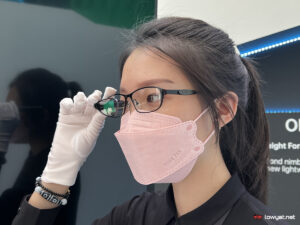
Alongside its first ever foldable smartphone, OPPO also unveiled its AR-powered eyepiece during its Inno Day 2021 showcase last week. The device, known as the Air Glass, is also the first of its kind from the company, which aims to provide users with useful information such as directions or real-time translations via its lens – similar to the now discontinued Google Glass.
The brand also noted that the Air Glass will only see a limited release in its home country of China next January, with no plans of launching it in other regions for now. Thankfully, OPPO Malaysia has granted us the chance to try the device for ourselves. So without further ado, here’s our hands-on impression of the company’s new hi-tech monocle.
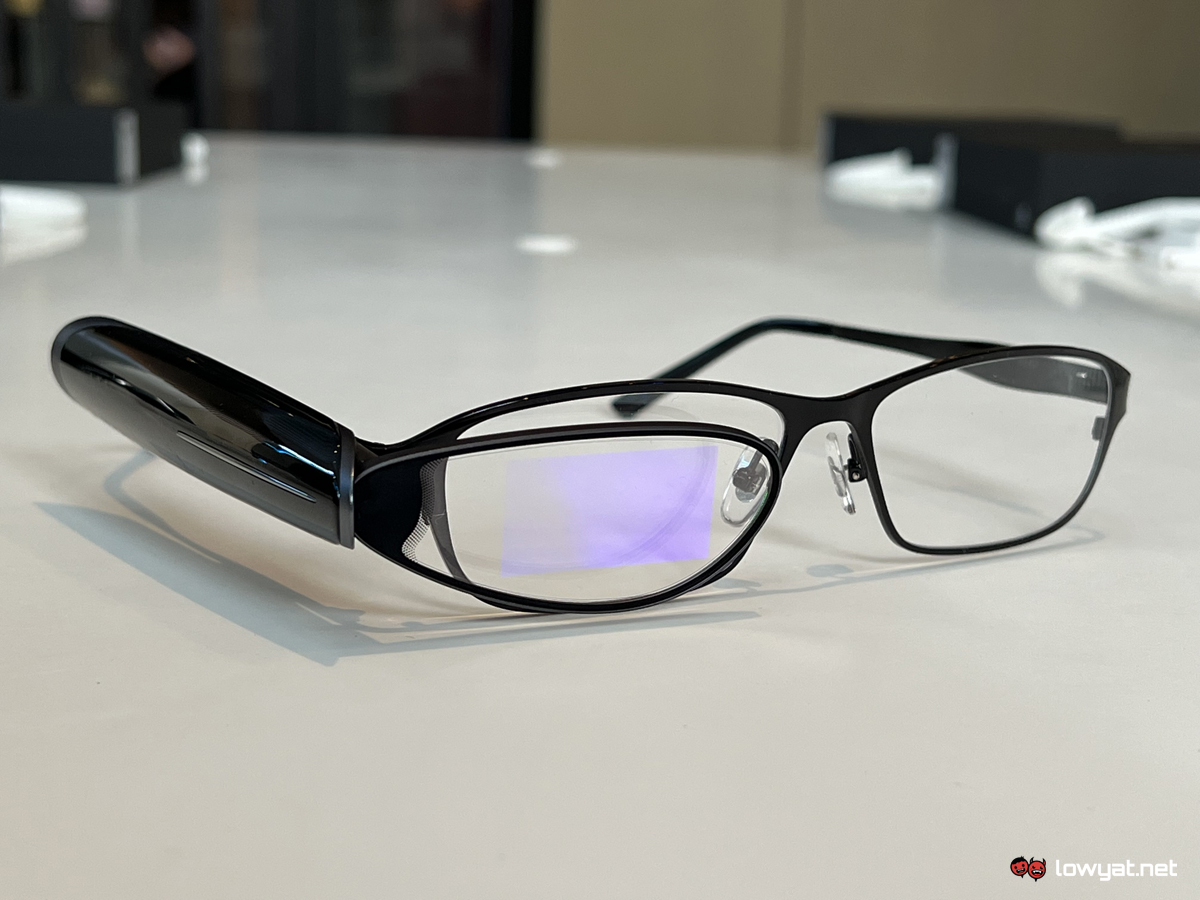
As mentioned in our initial coverage last week, it is required for the Air Glass to be mounted on the included spectacles frame in order to use it. Reason being that the eyepiece is designed to be attached to the magnetic port that is located on the frame’s temple. Strangely enough, each side of the frame actually features a port, even though the Air Glass is only meant to be worn on the right side. When asked, OPPO representatives told me that there are currently no plans to introduce a left-hand version of the eyepiece, so the left side of the frame holds no purpose other than giving it a symmetrical appearance.
The frame also comes with non-prescription lenses, which you can swap out with prescription ones if necessary. And on that note, being someone who wears glasses on a daily basis, I did have to put mine aside in order to test the Air Glass.
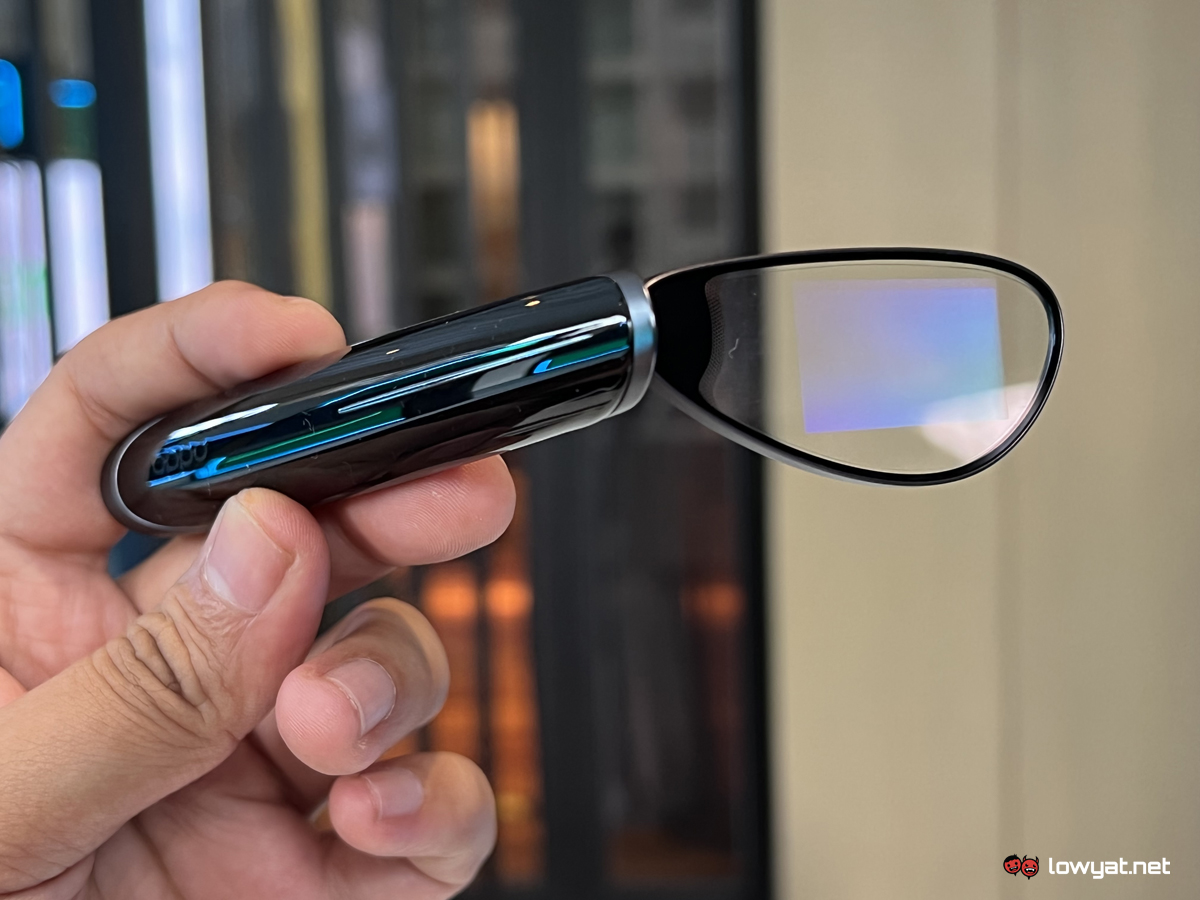
The monocle itself is quite light, although it feels slightly weighty on the right when wearing the entire setup, which does feel a bit awkward at first. Its body is made of plastic, designed in a way that will certainly please sci-fi fans. In front of the device is where the glass and projector are located, while in the back is a speaker that will rest above your ear when worn. Found on the exterior side of its body is a thin strip for touch-based controls, whereas on the interior side is where the magnet is located.
Also onboard is a built-in microphone for accepting voice commands and for identifying speech for the real-time translation feature. There’s no camera on the Air Glass, which is actually a good move since Google Glass was slammed hard with privacy concerns due to featuring one. The lack of a camera also means we won’t be expecting OPPO’s eyepiece to feature advanced AR apps and capabilities such as image recognition. So even if a power level scanner app does exist, it’s doubtful that the device will support it. Bummer.
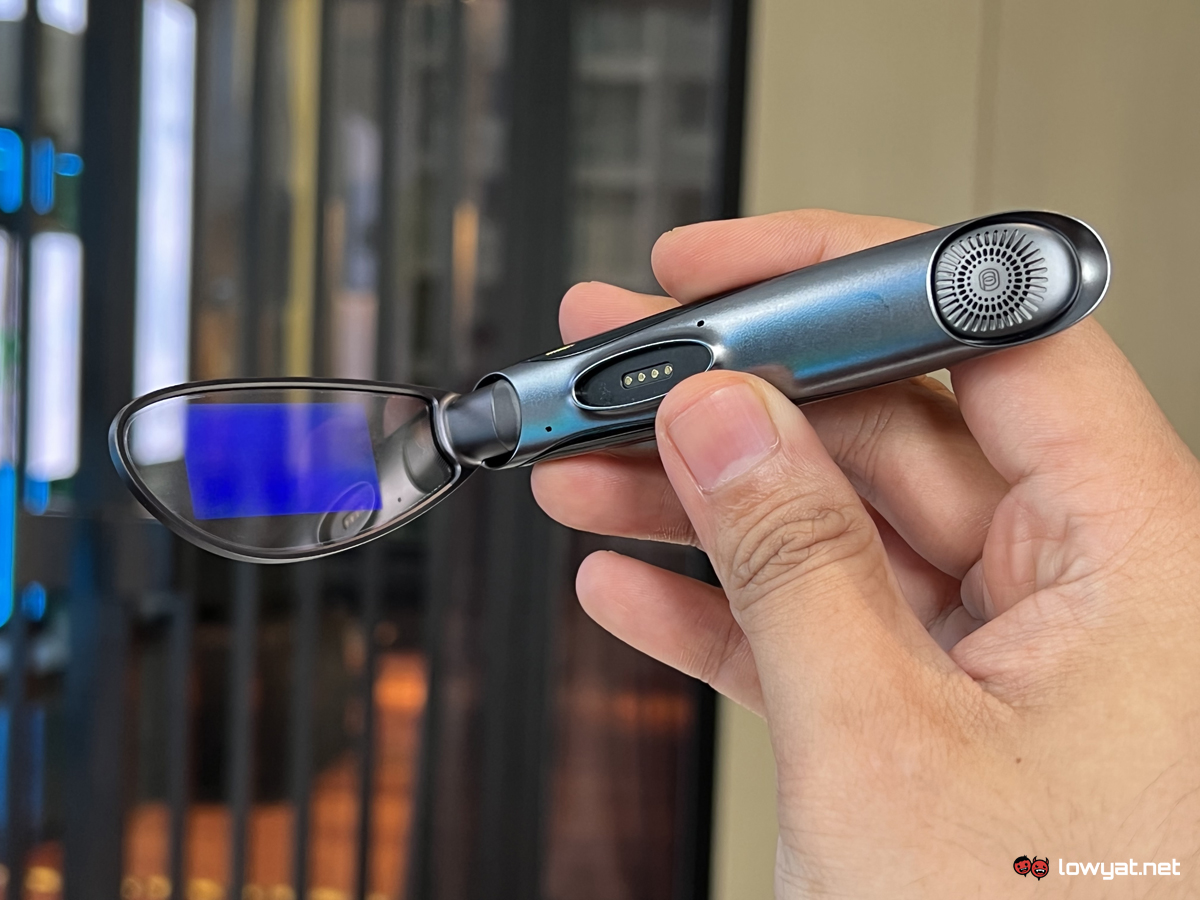
The Air Glass’ heads up display is very clear and sharp, even in bright environments. However, don’t expect any fancy 3D imagery as the projector is designed to only display text and simple graphics in a single colour: green, which fits OPPO’s branding. The display works quite well with the different on-screen features that the eyepiece supports, which includes weather information, a teleprompter, cycling and walking navigation, and a real-time translator. The latter is perhaps the more interesting function from the bunch, but I wasn’t able to test it properly due to how loud the environment was at that time.
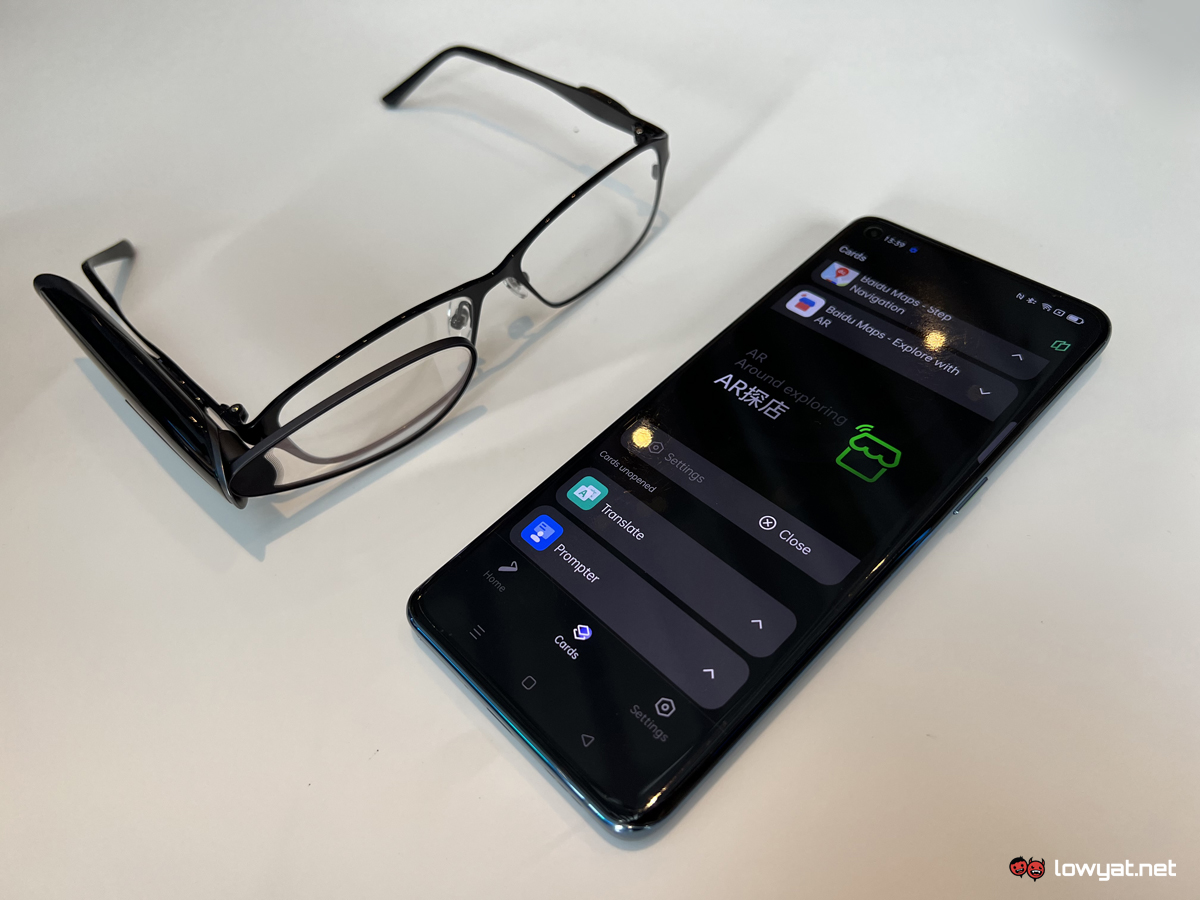
All of the aforementioned functions are handled by the Air Glass companion app which is only available for OPPO smartphones with ColorOS 11 or above, and there are currently no plans to introduce it on other platforms. And despite its connectivity with phones, the Air Glass does not come with a notifications feature for the time being. On that note, OPPO says it is still studying other possible features with the eyepiece and may implement them in the future.
For those wondering, the Air Glass is claimed to be able to last up to three hours of usage, with an additional 10 hours via a dedicated dock. Charging the dock itself is done by plugging it to a charger via a USB-C cable. Given the limited time given for testing the device, I wasn’t able to evaluate its battery performance.
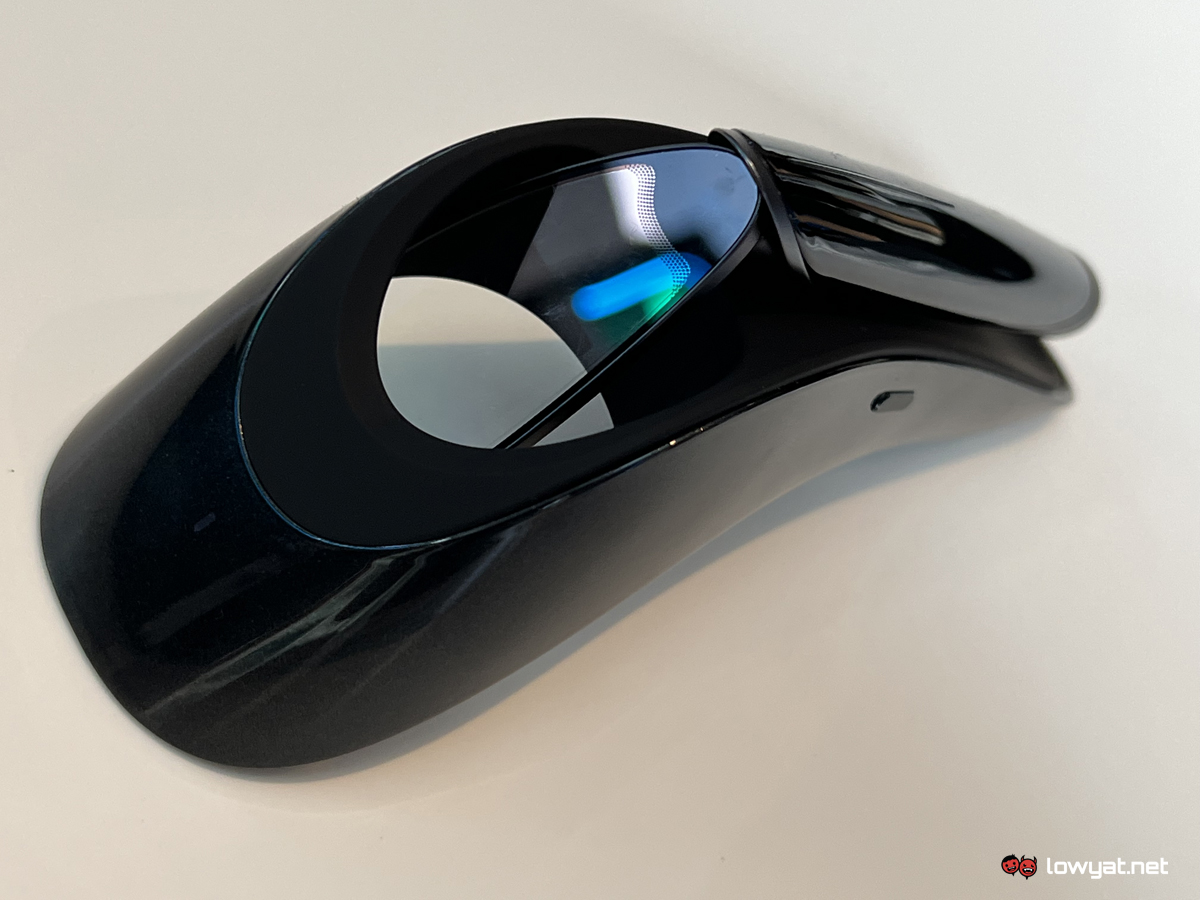
All-in-all, the Air Glass is an interesting piece of innovation that takes another shot at the smart eyewear category, although it is still too early to tell whether it actually succeeds at this attempt. OPPO has yet to reveal the pricing for the eyepieces and, as mentioned earlier, it will only see a limited release in China during the first quarter of 2022. But should the device one day be released in Malaysia, you can expect us to provide you with a more in-depth review.
The post OPPO Air Glass Hands On: A Niche Piece Of Innovation appeared first on Lowyat.NET.
0 Commentaires